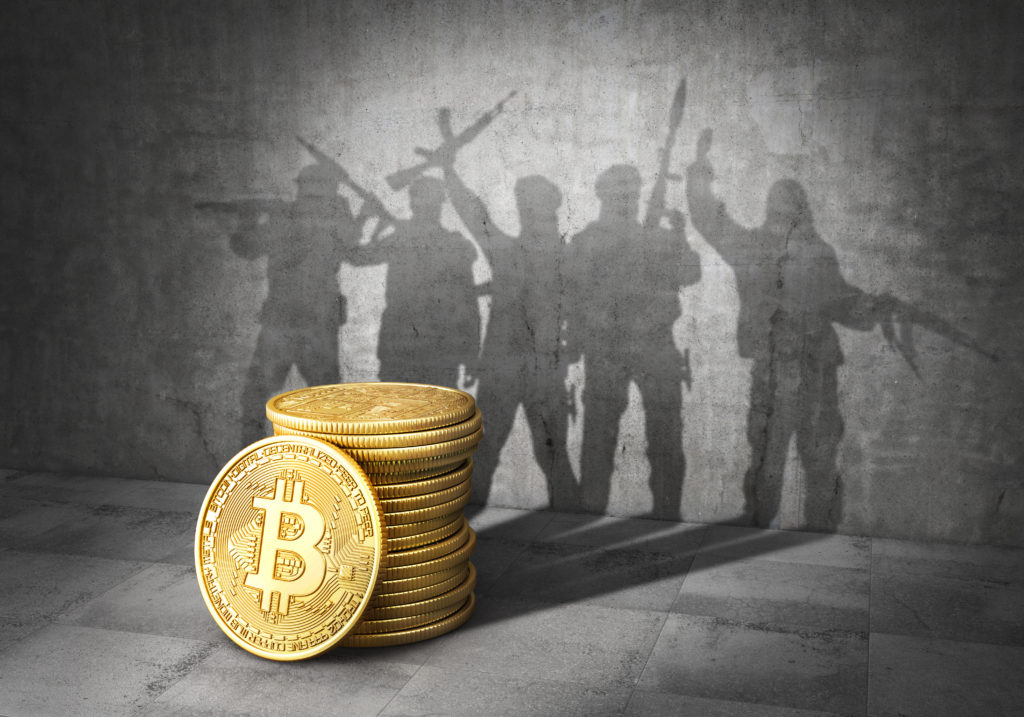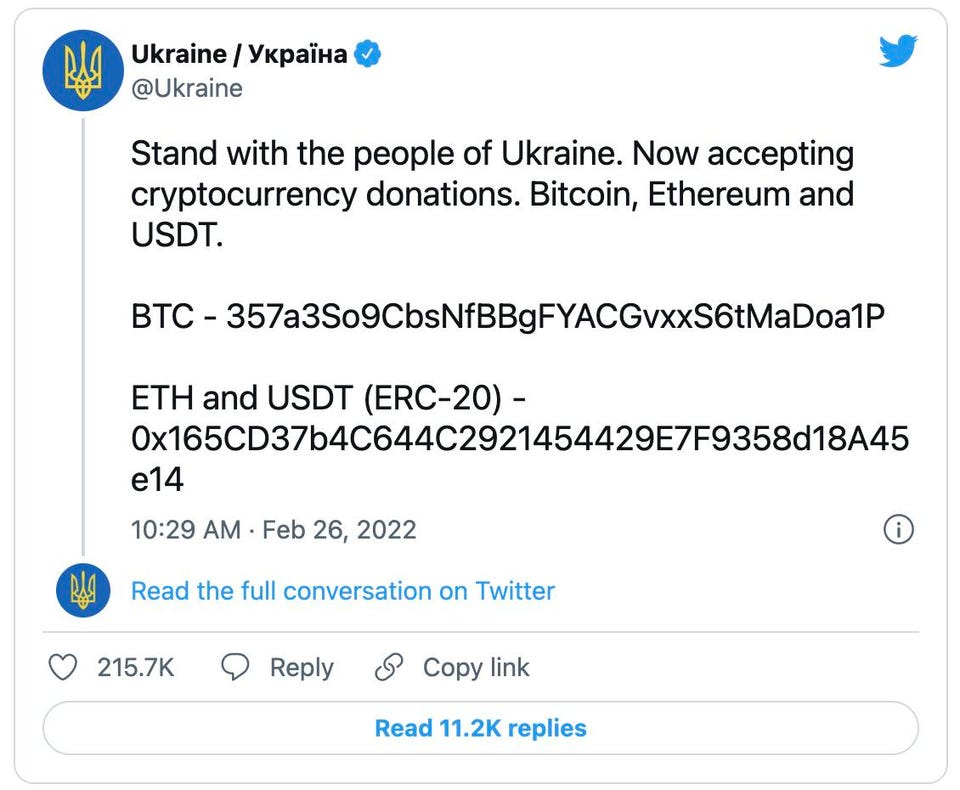
This is the second in a series of articles we plan to write to educate and talk about all things “Blockchain”.
Years ago, when we started talking about Digital Assets and Blockchain, one of the early criticisms among sceptics was the lack of “real-life”, practical use-cases. Well, one is playing out in “real time” with regard to the Russian invasion of Ukraine, leading some to describe it as the “first crypto war”. Digital assets have taken on an unprecedented role in the war in Ukraine, helping the government raise hundreds of millions of dollars to fight against the Russian invasion.
At the early outset of the conflict, Ukrainian officials posted the addresses of crypto wallets on their Twitter accounts, giving donors a direct method of sending financial aid and contributions (see example below). Since then, more than $100m worth of crypto has been raised by the “Crypto Fund for Ukraine” run by Michael Chobanian, the founder of the Ukrainian crypt exchange Kuna.

For the Ukraine, crypto was supposed to be a launchpad into the future. Ukraine’s deputy minister for digital transformation Alexander Bornyakov hoped that digital assets and blockchain technology would help revitalize the Ukrainian economy and bring all government processes online. But now, it has become an important lifeline for defense in a country being ravaged by war.
Much of the crypto, spread across assets such as bitcoin, ether, polkadot, solana, dogecoin, tether and more, have gone to help fund humanitarian agencies distributing aid in the country. Other funds have helped supply soldiers with food, uniforms, and other military equipment and supplies. These funds are also being used to fight the cyber war, reportedly defaced Russian government websites, provided intelligence, and taken down military systems.
Using crypto in the middle of a crisis is not always easy, after all it requires an internet connection and a working device. Furthermore, not everyone is adept at transacting and transferring of crypto assets, making it ripe for fraud.
And blockchain does not pick sides. Crypto and blockchain have also likely helped Russia avoid some financial and economic sanctions. Crypto assets cannot be frozen, censored, and can be used without ID, making them both an important humanitarian tool AND a tool to subvert illegal actions. Iran, for example, has used bitcoin mining to bypass trade embargoes in the past, according to research from the blockchain analytics firm Elliptic. Indeed, the New York Times reports that the Russian government has been developing a digital ruble and other tools to help avoid sanctions.
So, while the current use cases that have emerged in this first “Crypto War” were not necessarily the ones first conceived by blockchain futurists, they are important nonetheless and have further legitimized and helped make the case for blockchain. Indeed President Biden just issued an executive order, “Ensuring Responsible Development of Digital Assets” giving further recognition to the fact that blockchain and crypto assets are investment themes that are here to stay!
Disclosure
The opinions expressed on this page are not intended to serve as investment advice. The information provided is as of particular time and subject to change at any time without notice. It is not possible to invest directly in an index. Exposure to an asset class represented by an index is available through investable instruments based on that index. EQM Indexes does not sponsor, endorse, sell, promote or manage any investment fund or other investment vehicle that is offered by third parties and that seeks to provide an EQM Indexes is not an investment advisor, and makes no representation regarding the advisability of investing in any such investment fund or other investment vehicle. A decision to invest in any such investment fund or other investment vehicle should not be made in reliance on any of the statements set forth in this article. Prospective investors are advised to make an investment in any such fund or other vehicle only after carefully considering the risks associated with investing in such funds, as detailed in an offering memorandum or similar document that is prepared by or on behalf of the issuer of the investment fund or other vehicle. Inclusion of a security within an index is not a recommendation by EQM Indexes to buy, sell, or hold such security, nor is it considered to be investment advice.
